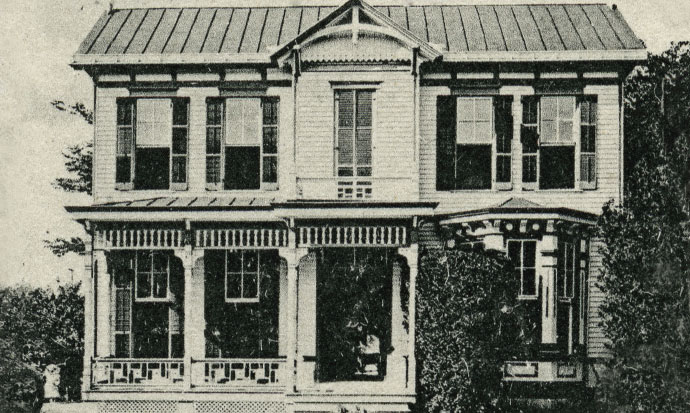Architecture

Comal County Courthouse, 3½-story Romanesque-style building constructed with limestone in 1898.
“Some houses were of logs, some were of studding framework filled in with brick, some were frame, while others were huts with walls made of cedar posts driven vertically into the ground like the posts of a stockade. The roofs, instead of being covered with the customary wooden shingles found throughout America, were covered with tent canvas or a couple of ox hides.”
–Dr. Ferdinand von Roemer, April 1846

Two-story wood frame house with widow’s walk, circa 1900.
German settlers quickly built fences to secure their livestock. Early versions were made of cedar or oak, typically in zigzag construction. Around 1859 they began to utilize large, undesirable stones that were prone to breaking plows, stacking the stones for even stronger fencing. Often an entire family would labor for years to finish their entire property. Miles of quality stone fences were built, and many are still standing today—easily identifying German-founded communities.

Stacked native rock fence, 1859.
The settlers’ initial wooden cabins were temporary dwellings. After several years they built more elaborate houses that showcased construction methods brought from Germany, including distinctive half-timbering fachwerk. These homes were commonly one and a half stories, with open porches on the front and outside stairways.

Some early settlers used “wattle and daub” fachwerk as an interior insulation for their homes, circa 1850.
Half-timbering fachwerk lost favor after the Civil War. Builders realized the native limestone and sandstone did not need the support of wooden beams, and so they began constructing larger stone houses.
